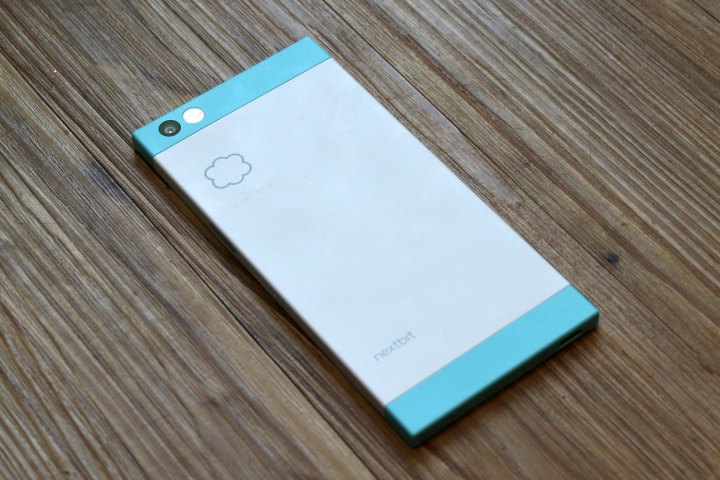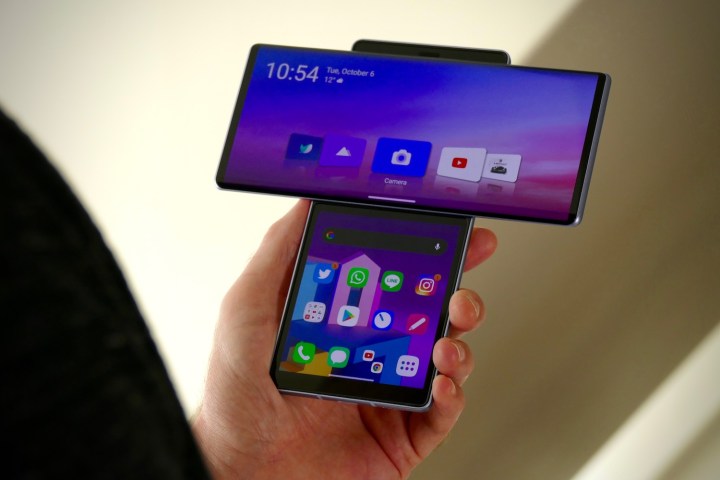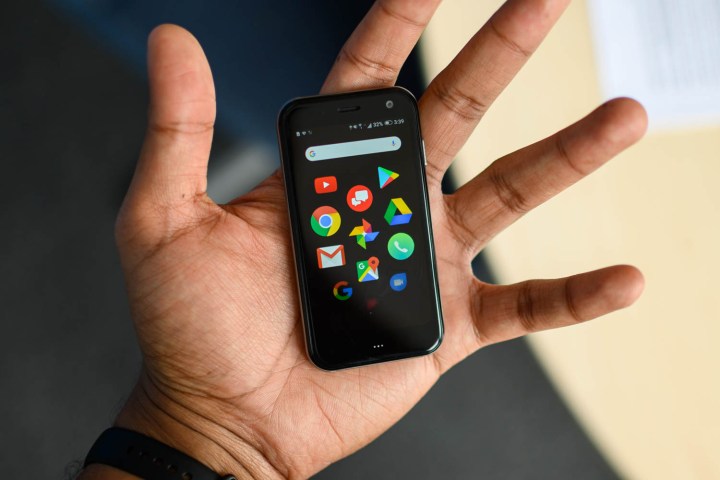More than almost any other smartphone right now, the Nothing Phone 1 has done an incredible job of making the tech world go head over heels for it. On the one hand, it’s easy to see why. For months, Nothing has been pitching its smartphone as something different in the industry. This is partly thanks to a transparent back, which reveals many of the Phone 1’s internal components that would otherwise be hidden. The Nothing Phone 1 also features over 900 LEDs across its backside that can be used to display incoming calls, charging status, and more. It’s different, unique, and doesn’t look like an iPhone or Galaxy S copycat.
But the Nothing Phone 1 is far from the first weird smartphone we’ve ever seen. Weird phones have existed for years, with many of them coming and going over the last decade. The only difference is that they didn’t receive the same level of attention as the Nothing Phone 1 — despite being objectively more interesting. Here are five fairly recent examples of weird smartphones that deserved to be every bit as popular as the Nothing Phone 1 is today.
YotaPhone

The hallmark feature of the Nothing Phone 1 is the LED lighting on the back of the phone. These strips light up to show the phone’s charging status, incoming calls, and when the reverse wireless charging function is being used. It’s a neat party trick, but you know what’s more interesting than ambiguous LEDs on the back of a phone? Having a second E-ink display.
That’s exactly what we got with the YotaPhone. Released in 2012, the YotaPhone looked like a standard Android phone from the front. It had a 4.3-inch LCD display, a front-facing camera, and an earpiece for taking phone calls. Nothing out of the ordinary! But when you flipped the YotaPhone over, you were greeted by another 4.3-inch display — this one using E-ink technology. That E-ink display could be used for checking notifications, viewing your calendar, browsing RSS feeds, reading e-books, and more — all without ever using the main LCD display.
Yota went on to launch the YotaPhone 2 and YotaPhone 3 in the following years, but eventually went bankrupt in 2019. While availability issues and a hefty lawsuit ended up being the demise of YotaPhone, it also failed to build nearly as much hype within the tech community as the Nothing Phone 1 is doing. I admire what Nothing founder Carl Pei is trying to do with the Phone 1, but I’d take an e-ink display on the back of my phone over bizarre LEDs any day of the week.
Nextbit Robin

One of my biggest complaints about the Nothing Phone 1 is how all the design focus went on the back of the phone. From the front, it looks like any other Android handset, hole-punch camera cutout included. The Nextbit Robin is another smartphone that placed a great emphasis on unique design, and it did so for the entire package.
The main way Nextbit achieved this was with the Robin’s shape. With a completely flat frame and sharp edges, the Nextbit Robin looked unlike anything else on the market, and still does. The back of the phone complemented the aesthetic with a turquoise and white two-tone design, while the front contrasted the Robin’s sharp lines with circular speaker grilles flanking both ends of the display. No matter what angle you looked at the Nextbit Robin from, it was distinctly different from any of its competitors.
Nexbit was successful enough to draw the attention of Razer and was quickly acquired by the gaming company about a year after the Robin’s release. And while Razer retained some of Nextbit’s DNA with the Razer Phone and Razer Phone 2, the best design decisions were lost in translation. The Nextbit Robin is a device I can still distinctly picture nearly seven years later. Based on what I’ve seen so far, the Nothing Phone 1 will probably fade from my memory before the year is over.
Asus PadFone

Whenever I have a chance to write about weird smartphones, I’m always going to mention the Asus PadFone. On its own, the Asus PadFone was a standard-looking Android device. It didn’t have a flashy design, unique camera housing, or any stark visual traits. But the phone itself was only half of the equation.
Every Asus PadFone also came with a companion tablet. The “tablet” was really just a larger display with a slot on the back for the phone to dock into. When attached, the PadFone powered the tablet display and brought all of your apps, games, and files to a bigger screen. Although the execution was far from perfect, having one device act as the brains for a pocketable phone and a larger tablet remains one of the most unique designs I’ve ever seen.
Unfortunately, that mixed execution and lack of consumer interest saw the PadFone series come and go over the course of about two years. Devices like the Galaxy Z Fold 3 and Oppo Find N have made the PadFone pitch mostly redundant in mid-2022, but it remains one of the most memorable devices I’ve ever used.
LG Wing

Of all the weird phones that have failed, the LG Wing is one of the freshest examples and is among the strangest phones I’ve ever held. Announced in September 2020, LG’s idea behind the Wing was to make the “world’s first 5G swivel smartphone.” What did that mean? On the surface, the LG Wing was a standard-looking 6.8-inch handset. But with a quick flick of the display, it swiveled upwards to reveal a secondary 3.9-inch screen below it.
You could watch a YouTube video while browsing Twitter, look at a digital receipt while also using a calculator, play a game while reading a how-to guide — the possibilities were endless. And when you didn’t want or need the secondary screen, the LG Wing looked and felt like a (mostly) normal smartphone.
On paper, a dual-screen device like this is more interesting than one with a few LEDs and a transparent backside. But that’s not at all what happened. The LG Wing got some initial buzz, but was quickly pushed to the wayside and dismissed as being “too weird.” Meanwhile, the Nothing Phone 1 has remained in the spotlight for months on end.
Palm (2018)

Yes, the Palm phone from 2018. This bizarre reincarnation of the fabled Palm brand was downright bad for a multitude of reasons. It had abysmal battery life, a lackluster camera, was exclusive to Verizon, and could only be used if it was connected to another smartphone. At $350, there was no justifying its high price.
But despite those problems, I can’t help but wish for a future where the Palm phone was executed properly — and had a good marketing push that really made people aware of it. Whether you’re heading off on a weekend getaway or want a small phone to take with you on a run, the idea of having an ultra-compact device still capable of most modern smartphone tasks is really appealing.
The weird road is a dangerous one to travel
Looking back at these phones — phones that were arguably much more interesting than the Nothing Phone 1 — I can’t help but wonder what the future holds for Pei’s passion project. The Nothing Phone is fun and weird, especially compared to an iPhone 13 or Galaxy S22. But time and time again, the market’s shown us that weird phones are rarely successful ones.
Pei’s done a phenomenal job of getting people excited for the Nothing Phone 1. But with more recent announcements of an invite-only buying program and no U.S. availability, things are already shifting in the wrong direction. If an E-ink display couldn’t save the YotaPhone and an unforgettable design wasn’t enough to keep the Nextbit Robin around, I struggle to see how a few customizable LEDs will help the Nothing Phone 1 succeed where its more interesting predecessors have failed.

